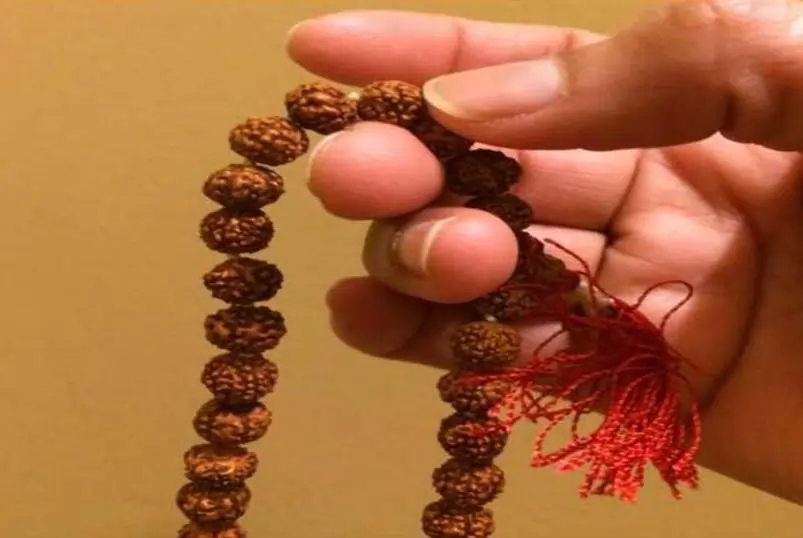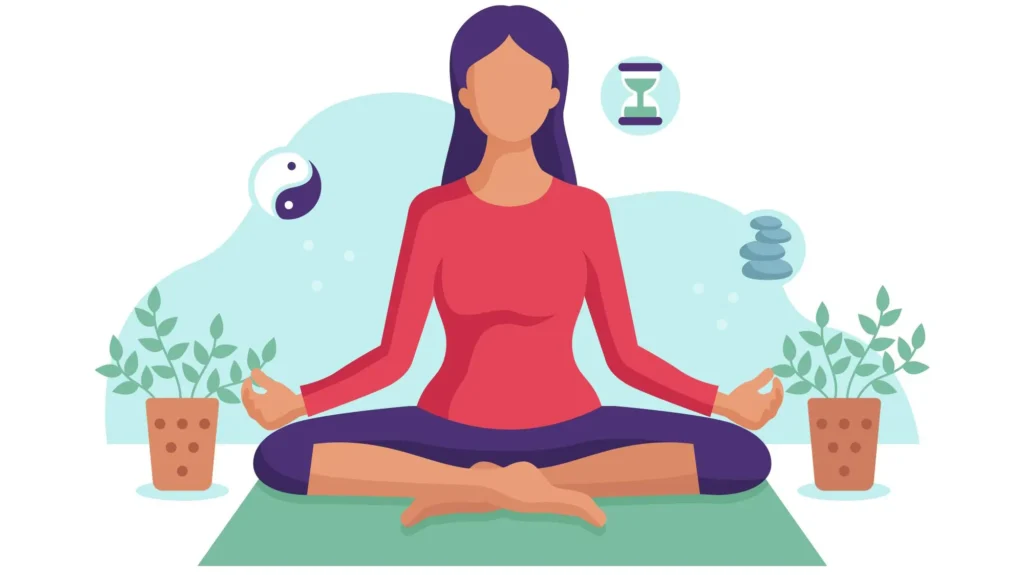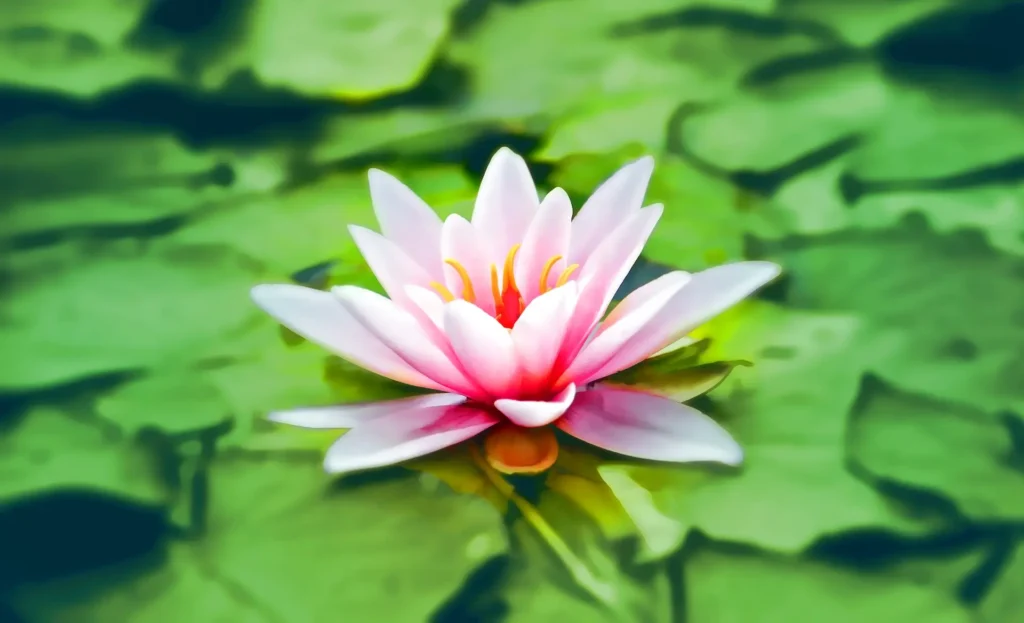Each of us is unique, and we have several aspects of our lives and personality; and our paths in life are also different. But, what we are seeking is just one thing: a sense of fulfillment and happiness.
A sense of fulfillment is related to overall growth in various spheres of life-this includes your social, personal, professional, and spiritual realms.

Even if we are bluffing ourselves into a false sense of fulfillment in any of these spheres, somewhere deep in our hearts, we know we need to do better to attain success. So, the first step is recognizing our weaknesses instead of running away from them.
When you have found the problem, the next step is to form an action plan to convert your weaknesses into strengths and enhance them to achieve success in life. But, first, let us see what success is.
What is Success?
Success is generally defined as the ability of a person to reach the set goals. In other words, one can say that success is the attainment of goals. Success can also be progress related to accomplishments. It may not be a destination but a journey where while making your offerings to people, you earn more fantastic skills and resources.

Meditation enables you to set and achieve your life goals in many ways. Here are three ways in which meditation helps you to accomplish achievements in different spheres of life.
1. Meditation Helps You Get An Enhanced Focus
Different techniques of meditation are about practicing focusing on your breath or on mantra. As you do this everyday, it gives you a better ability to concentrate and increases your efficiency. As you become more efficient in handling your work, you get more productive. A focused work means less time to do things helping in better time management.

2. Meditation Enhances Your “Mindfulness”
Based on the results of a study, psychologists suggest that meditation can help you decrease your stress level.
Mindfulness increases your focus at the moment and lets you see things as they are. It increases the quotient of bliss and joy in your experience every moment. As a result, you can spend quality time with family and friends, and you’re able to enjoy your work and strike the right life balance.
3. Meditation Can Boost Your Mental and Physical Strength
Another study also shows that meditation alleviates the symptoms of depression. Therefore, practicing meditation of various forms like mantra, walking, and breath meditation can help you overcome negative emotions of depression and anxiety.
Moreover, meditation can lead to multiple health benefits, as explained in a study by Harvard scientists; for example, meditation can help lower pain intensity.
4. Meditation Blossoms Your Creativity
Meditation helps to flower your being. It makes you highly creative and balanced and leads to a better quality of life. Just as you experience the stillness within, you can find creativity unfolding in numerous ways.

Let’s see how meditation works according to Vedanta perspective.
To understand the process of meditation, let us first understand the mind.
However, the mind is just one function of an internal tool we have known as antah-karana. Anatha-Karana is a tool (karana) present within (antah) our being but helps us connect and function in the outer world. This Antahkarana has four forms of functionalities:
- Mann (Conscious mind)
- Buddhi (Intellect)
- Chitta (Subconscious mind)
- Ahankara ( “I” ness- the feeling of ‘I am.’)

Mann (Conscious Mind)
Let us analyze what ‘manah’ or conscious mind is. Consciousness is the active thinking mind. It comprises a mixture or a jumble of memories, thoughts, anti-thoughts, emotions, and feelings
- Sankalpa: A thought to do a particular action. For example, “I want to eat a hot dog.”
- Vikalpa: The anti-thought or another option to the initial thought. For example, for the above Sankalpa, vikalpa may arise in this way, “Hot dog is unhealthy, I should go for a croissant or a Kale sandwich.” Furthermore, more vikalpas can occur, “Let me cut down calories. I’ll go for Kale juice.” These are vikalpa or other options for original thought or sankalpa.
- Bhavana: These are the ‘feelings’ in the mind. There are primarily nine kinds of feelings the mind can have.
- Shringara-Love/Beauty
- Hasya-Laughter
- Karuna -Sorrow
- Raudra-Anger
- Veera-Heroism/Courage
- Bhayanaka-Terror/Fear
- Bibhatsa- Disgust
- Adbhut-Surprise/wonder
- Shant-Peace or tranquillity

- Smriti: This is the collection of active memories.
Chitta (Subconscious Mind)
This is the more significant part of the mind that has the stored impressions. It is like a surveillance CCTV camera. It records everything that comes within its range. Any incident or a happening that occurs in front of the senses, is recorded in the Chitta. This information is brought to the fore and into the active mind in the form of memories when needed.

The scriptures like Patanjali Yoga Sutras have explained chitta. It is explained that the ‘Chitta’ is vast and has impressions not only of this life but several lifetimes we have lived. This is because our physical body is mortal and dies, but Antahkarana does not die like the physical body. Instead, it gets transferred from one body to another, like water in a pot gets transferred to another container. Therefore, with techniques like past life regression, it is possible to bring back memories of past lifetimes.
Buddhi (Intellect)
This is the Antahkarana functionality that decides in favor of a Vikalpa or Sankalpa. For example, if you feel hungry and you have craving for a particular dish such as pasta. ‘To eat pasta’ is now the sankalpa in the Mann or conscious mind. At the same time, the conscious mind also starts thinking of other options for a meal based on memories; for example, the taste or perceived nutrition value (impressions in chitta), you may also thinks of Broccoli Sandwiches, Tacos, or Apple Pie.
But the intellect finally decides to go for a Broccoli Sandwich based on the nutrition factor. Intellect is the decision-making faculty of Antahkarana.

Ahankara (“I-ness’)
The Antahkarana is the faculty that makes you think- ‘I am.’ We recognize our unit of body and mind as ‘me.’ This is due to ahankara. It gives the feeling of “I” ness. For example, Tina knows she is Tina and not Rita. Rita knows she is Rita, not Tina or anyone else, due to Ahan-kaara.
Scriptures like Upanishads explain that due to ahankara, we all act as individual selves though we all are images of One Consciousness reflected in different Antahkarana.
Each Antahkarana with the reflection of the same Consciousness is a distinct unit. That’s why we have so many individuals, living beings of different kinds, and non-living things from one Universal Consciousness.
Ahankara is what makes us unique and gives us the feeling of “I am.”

Furthermore, we will analyze how we get the benefits of meditation. For this, we must understand the different states of mind, as explained by Sage Patanjali.
The Conscious Mind Exists in Five States
Kshipt: This is the distracted state of mind where there are a lot of thoughts, anti-thoughts, stress, and anxiety. Our aversions and attachments to situations can lead to a kshipt state of mind. For example, a child wants to eat chocolate but doesn’t get it. As a result, he will have a disturbed state of mind known as kshipt avastha.
Vikshipt: This is a thinking or disturbed state of mind for reasons you may or may not know. This state of mind can also be an outcome of contemplation on higher knowledge. When the mind is feeling emotions like depression or anxiety for no apparent reason, this can be due to dormant impressions in the subconscious mind getting active.

Moodha: The idle state of mind where the conscious minds seems more or less lost. The conscious mind is dull, lazy, or feels deluded or fearful in ‘moodha state.’
Ekagra: This is the one-pointed state of mind. It is achieved through the practice of yoga. The practice of yoga starts with following moral conduct in one’s personal life and following healthy interaction with others and exerting control on the body and mind with Yogasana and Pranayama. these help in building an ekagra state of mind. Also, practices like mantra meditation and breathing meditation can bring the ekagra avastha.
In general life too, we experience ekagra state of mind at certain times. For example, when you’re reading your favorite book with rapt attention, it’s closely linked to the ekagra state of mind.

Nirodh: This is the highest state of mind where conflicts due to attachment and aversions mind get resolved. The mind is in a ‘sama’ (balanced) state. It is an equanimous and calm state of mind where it feels blissful. This is achieved with the constant practice of yoga and meditation.
Now, let’s understand grievous state of mind we experience.
What happens when you experience grief or ‘dukkha’?
Grief, sadness, or ‘dukkha’ results if our desires do not get fulfilled.
But what exactly happens?
-Simple answer is that the equanimous or balanced state of mind is lost.
To understand this, imagine the mind as a lake on a moonlit night. In a balanced state of mind, the moon of our True self or Atman (Universal Consciousness) is reflected clearly in our conscious mind. So, the mind feels blissful.

When a desire doesn’t get fulfilled, Rajoguna (the universal principle/quality of movement or action) becomes active. It’s like the stormy winds that disturb the lake’s calm waters. It creates too many ripples in the conscious mind. As a result, the reflection of the moon of Atman (embodiment of ever-conscious-blissfulness) is not clear on the mind’s surface. Due to this, disconnection, the mind feels grief.
In another case, if the lake does not have clear water, the water is highly soiled, muddy, and has a layer of algae on it. Again, it will not get a clear reflection of the moon as the lake’s surface is obliterated. It is the ‘tamoguna’ (inertia or ignorance) that obstructs the mind’s state of blissfulness. This happens in the conscious mind’s ‘moodha’ state.

A Closer Look into The Disturbed States of Mind
In the case of depression and anxiety, the mind is never present in the equanimous state; it is either lost in ignorance or overthinking due to dominance of ‘tamoguna’ or ‘rajoguna.’ It’s connection with Real-Self (Atma-swaroop) is lost Due to this, the mind feels amiss and sad.
Furthermore, in many cases of depression, subconscious impressions can also be responsible. When, due to specific environments, only bad memories or certain harmful or negative feelings get triggered in the conscious mind, it may lead to the mind feeling bogged down or depressed.

We need to counter these negative feelings at the primary level. Meditation helps in doing this. There are various forms of meditation that help us achieve this.
Mantra Japa is one of the primary forms of meditation. It helps in alleviating the negative feelings and memories arising from the Chitta.
How?
Focusing on chanting a single mantra lowers the number of distracting thoughts in the active mind. Also, it is understood and believed that mantras when pronounced rightly emit frequencies to strengthen the mind. As a result, the conscious mind starts gaining a state of tranquility. And the clear reflection of moon of Atman gets formed again on the surface of mind’s placid waters. Thus, we experience bliss due to mantra chanting.
Nearly, a same happens when one of our worldly desires gets fulfilled, but for just a few moments. The active mind gets pacified due to ready access to the object of desire. As a result, the mind’s surface gets clear enough to reflect the Real-Self. So, we experience joy for a brief duration of fulfilling desires. However, again the mind will produce ripples for another wish, and the vicious cycle continues until the mind can no longer experience joy in fulfilling of the same desire.
For example, you love to have truffles. Eating one gives joy. Two gives more. Then three, four, five, six …, maybe up to 20… But, continue more and go on till 100. You will vomit and want to eat none after some time. It is the mind’s element playing games with you.
The Best Way To Derive Constant Joy In Life
It is best to get bliss independent of the object of desire. However, you can also enjoy the fulfillment of desires better if you control your conscious mind. This is done through meditation.
The Side Benefits of Meditation
- The lowered amount of stress, anxiety, depression, and negative emotions will indeed produce a feeling of well-being. Lower stress means higher immunity. Plus, when you practice yoga asanas and follow a disciplined life as ‘Yamas and Niyamas,’ you have a peaceful mind.

- A higher immunity again leads to a healthy body. Moreover, when the intellect is transparent and without falling blindly into indulgences for sensual objects, you make healthy conscious food choices, resulting in a healthier body.
- Yoga and meditation help bring health and wellness to the practitioner and those around them. A happy person around you creates good and inspiring vibes. With a clear mind, yogis also give good guidance to peers, friends, and those who approach them.
Overall, yoga and meditation can make our lives better in many ways.
The Guided Meditation Practice of Yoga Nidra
A study on Yoga Nidra, a guided meditation practice, suggests that people who practice Yoga Nidra have lowered CRP levels, which means lower inflammation. Studies also suggest a marked improvement in symptoms of high blood pressure, diabetes, and cardiovascular issues with regular practice of Yoga Nidra.

There is a need for ongoing work for research on yoga practices to get documented evidence of the benefits of yoga and meditation and make it a part of prescription medicine.
Meditation and Good Karma
“I try to meditate, but my mind is always full of thoughts, no matter how hard I try.”
Is this your problem as well? Don’t worry; regular practice with the proper guidance will help lower this burden.
Also, another practice one should consistently begin taking actions that give value to us and the people around us.
Participating in volunteering activities to help your community and anyone who needs a little support will go a long way. Good karmas form ameliorative impressions in the subconscious mind. They lead to positive feelings in the conscious mind. As a result, the mind gains strength with the practice of such right actions.
Moreover, good actions fructify or translate into positive situations in life in due course of time. They can also help you counter adverse problems if they arise.
Examples of Good Karma

- Giving a smile to a child, an elderly or even a stranger.
- Sharing your goodies (especially kids!).
- Participating in community services.
- Giving up part of your honest earnings to help someone in need.
- Paying taxes with honesty.
- Giving a helping hand.
- Being a good listener
- Volunteering for animal rescue.
- Planting and nurturing a plant or a tree.
- Practicing sustainability.
- Making conscious choices that are good for all.
- Mantra chanting.
- Diligent practice of any Meditation technique.
The catch here is you do sensible actions with a good intention and without feeling bloated about it. The lesser the feeling of doership, or (“I did good karma, I am great!”), the more prominent will be the effect of that positive action in life. That’s why it’s necessary to take care that humility is always your best friend.
Contemplate on wise words of Guru Nanak’s Bani that says:
“Vich duniya sev kamaiye, ta dargah baisan payiye||”
-If you earn the noble deeds of service in this world, you get a graceful position (even) after death.
“Nanak neeva jo chale lage na tatti vaao||”
-Oh Nanak, whoever walks humbly, doesn’t get scorched with the hot winds of misery.
There’s no second thought that leveraging the wisdom of our great scriptures, we can make our lives bloom with beauty, health, and grace.
You may also like:
- The Practice Of Yoga And Ayurveda In Relationship With Sustainability
- 5 Bedtime Yoga Poses for Better Sleep
Conclusion

Practicing Yoga and Meditation will enhance your life’s quality, wellness quotient, and gear you to realize your blissful eternal being. Once you have a purpose in life, it also brings things like conscious living into daily practice. It spontaneously transforms life into a joyful experience.
So, choose meditation if you want to live life as a full version of yourself. It is bliss for you and others. And yes, it’s crucial to build your good karma account. So, get going without losing more time!
